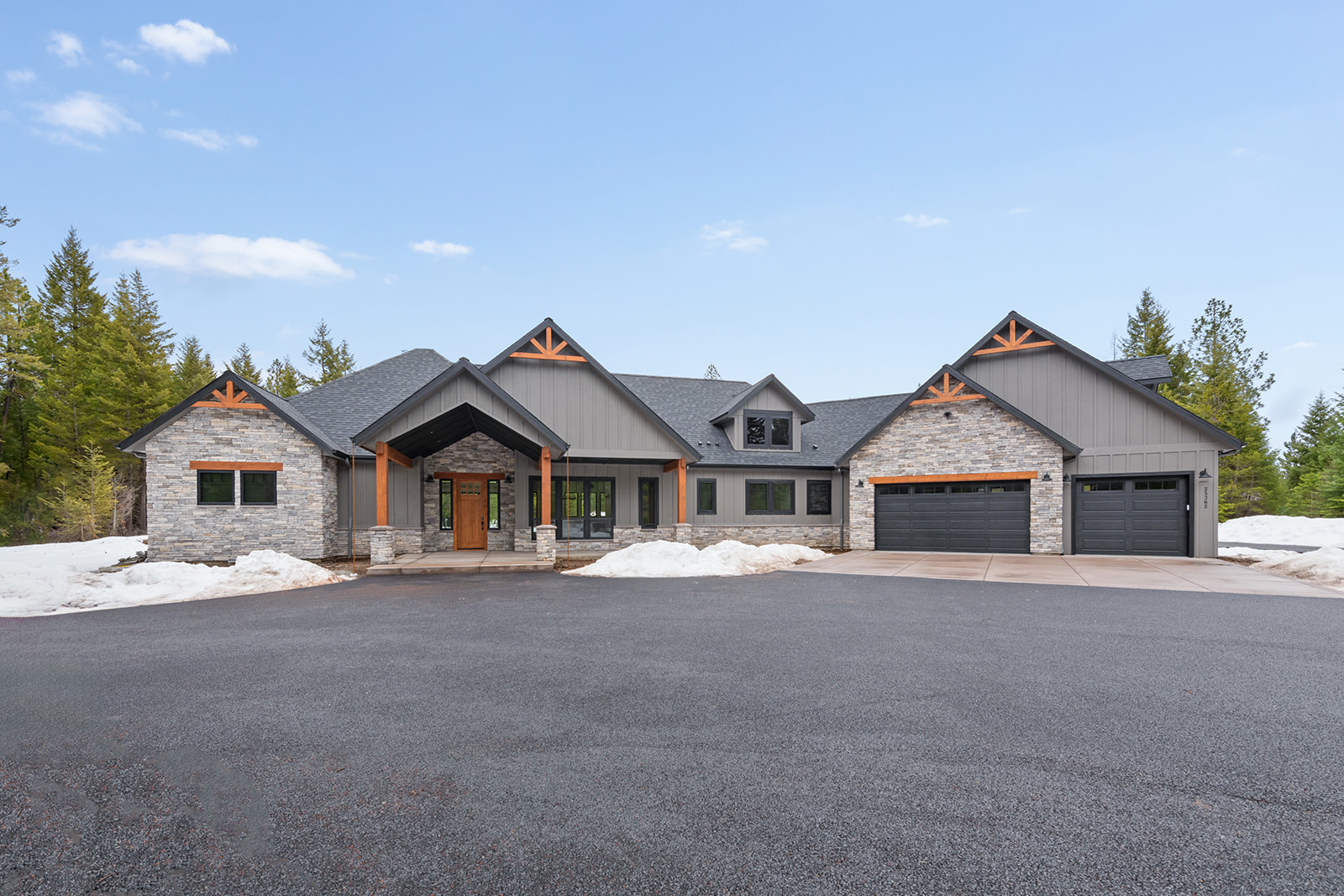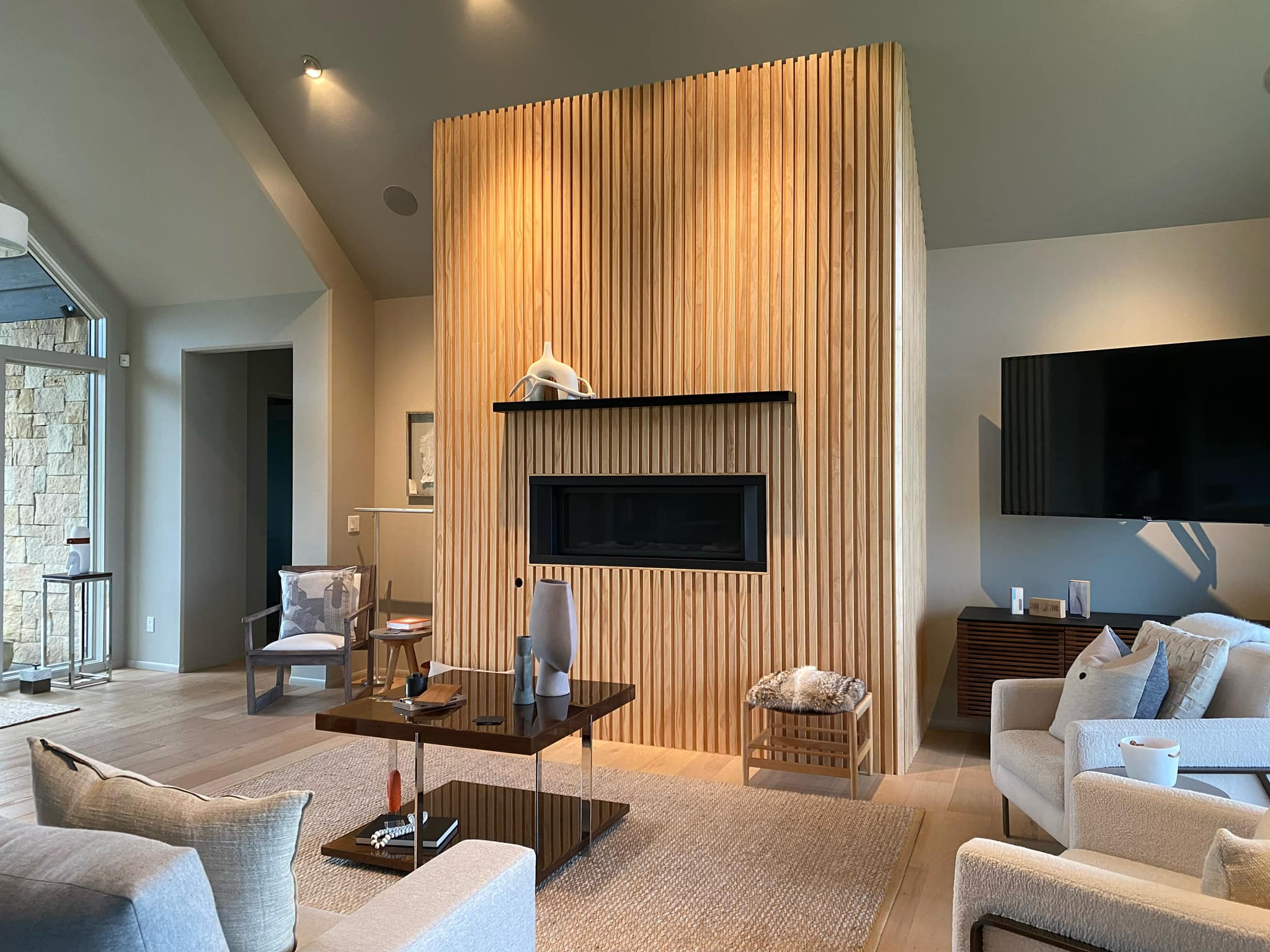
Evaluating the Value of Hardwood Flooring for Your Home
Are you considering hardwood flooring for your home but unsure of its true value? With options like oak and Brazilian cherry hardwood, it’s essential to evaluate both the aesthetic and financial benefits of this choice. This article will outline the investment needed, explore top engineered hardwood options, and provide guidance on maintenance. Readers will learn how to make informed decisions and obtain an accurate hardwood floor estimate in New Hampshire. By addressing common concerns related to durability and upkeep, this content aims to simplify your flooring journey.
Key Takeaways
- Hardwood flooring offers long-term value that often exceeds initial costs
- Proper maintenance and cleaning practices help preserve hardwood floor aesthetics and longevity
- Investing in quality installation ensures durability and enhances overall aesthetic appeal
- Selecting the right species of wood can influence maintenance needs and costs
- Customer reviews can guide homeowners in choosing reliable flooring retailers and products
Understanding the Investment in Hardwood Flooring
Understanding the investment in hardwood flooring involves considering several key factors. The cost of flooring is influenced by aspects such as humidity, woodworking techniques, and the quality of construction. Comparing hardwood to other flooring options reveals advantages in durability and aesthetics. Furthermore, evaluating the long-term value against initial expenses highlights hardwood as a strategic investment for home owners seeking quality flooring.
Factors Influencing Hardwood Flooring Cost
The cost of hardwood flooring is influenced by several factors that homeowners should consider when evaluating their options. Key elements include the quality of materials, particularly the type of wood chosen and the installation techniques used, such as adhesive and waterproofing methods. Additionally, environmental conditions, like humidity and potential noise reduction needs in spaces such as the bedroom, can also impact overall expenses, making it important to consult with local flooring companies for tailored advice.
Comparing Hardwood to Other Flooring Options
When evaluating hardwood flooring against alternatives like best engineered timber flooring or sheet vinyl flooring, several factors come into play. Hardwood flooring often stands out for its long-lasting appeal and resilience, making it a preferred choice for homeowners looking for value. While sheet vinyl flooring may be more budget-friendly initially, it may not provide the same level of durability or aesthetic charm that hardwood can offer, especially in unique locations like the northwest territories where climate may affect flooring options. Homeowners searching for “flooring near me” should assess both immediate costs and the overall value hardwood flooring provides over time.
Long-Term Value vs. Initial Cost
Investing in hardwood flooring entails examining both the upfront costs and potential long-term value. Homeowners often discover that while the initial price of solid hardwood or the best engineered wood might be higher than alternatives, the durability and aesthetic appeal can lead to significant returns over time. For instance, selecting the right species can influence maintenance needs, such as the floor sanding cost, which could be lower for more resilient woods, further reducing overall expenses.
- Initial investment in hardwood flooring.
- Comparison with alternatives based on durability and aesthetics.
- Impact of wood species on maintenance costs and longevity.
- Consideration of floor sanding cost as part of overall upkeep.
- The importance of choosing the right cleaning agent for longevity.
- Overall value compared to development over time.
Hardwood flooring is more than just an investment; it adds depth and character to a home. As the beauty unfolds, the real benefits become clear, making it a choice worth considering.
Benefits of Hardwood Flooring in Your Home
Hardwood flooring offers substantial benefits for homeowners, starting with its aesthetic appeal and design versatility that seamlessly enhances any space. Known for its durability and longevity, it performs exceptionally well in high-traffic areas, making it a preferred choice over options like rubber flooring. Furthermore, hardwood, including engineered timber flooring and floating floor designs, provides ease of maintenance, ensuring long-term satisfaction for residents in Newfoundland and Labrador.
Aesthetic Appeal and Design Versatility
Hardwood flooring stands out for its aesthetic appeal and design versatility, making it an excellent choice for any home. With various wood types and finishes available, homeowners can select options that align perfectly with their interior style, from traditional to contemporary themes. Unlike vinyl plank flooring, hardwood provides a warm, inviting ambiance, and its tongue and groove installation offers a seamless look, all while supporting the home’s long-term value, even when considering factors like hardwood floor installation cost or floor refinishing cost.
Durability and Longevity in High-Traffic Areas
Hardwood flooring, particularly hickory flooring, is renowned for its exceptional durability and longevity, making it a prime choice for high-traffic areas in homes. The best quality engineered wood flooring offers strength and stability, ensuring that it withstands wear and tear from daily activities. Unlike plastic flooring options, hardwood absorbs sound effectively, improving acoustics in busy spaces, while maintaining its attractive appearance even as it ages.
Ease of Maintenance and Cleaning
Hardwood flooring, including options like white oak flooring and the best engineered wood flooring, is known for its ease of maintenance and cleaning. Regular sweeping or vacuuming, along with occasional damp mopping, ensures that the floor remains in pristine condition. In homes using underfloor heating, this type of flooring also complements the heating system effectively, creating a warm and inviting atmosphere while being easy to care for, even in regions like Oregon where humidity can be a concern.
Hardwood flooring brings warmth and beauty to any space. Now, it’s time to look at the best engineered hardwood options that combine style with strength.
Exploring the Best Engineered Hardwood Flooring Options
When selecting the best engineered hardwood flooring, homeowners should consider essential features such as durability and design options, including the popular herringbone pattern. Awareness of reputable brands and their product offerings helps buyers make informed choices, while understanding wood flooring cost and wooden flooring price variations enables effective budget management. A clear comparison of quality across different brands will enhance decision-making for a lasting investment.
Features to Look for When Choosing Engineered Hardwood
When selecting engineered flooring, homeowners should prioritize the quality of the top veneer, as this layer greatly impacts durability and aesthetics. In regions like Utah and North Dakota, where environmental conditions can lead to mold growth, it is crucial to choose products that offer moisture resistance, particularly those with protective coatings. Additionally, understanding the composition of the flooring is important; options containing polyvinyl chloride (PVC) may not be ideal, as they can affect air quality and are often less sustainable than natural wood alternatives. Consider these features to ensure a lasting investment in flooring that combines beauty and utility:
- Quality of the top veneer for enhanced durability.
- Moisture resistance to prevent mold growth.
- Awareness of harmful materials like polyvinyl chloride.
- Overall aesthetic appeal and design options.
- Cost-effectiveness and long-term value.
Popular Brands and Their Offerings
Several popular brands offer high-quality engineered hardwood flooring, catering to diverse aesthetics and practical needs. For instance, brands like Shaw and Mohawk provide options that incorporate cement backing, enhancing stability and moisture resistance, which is crucial in regions with fluctuating humidity. Additionally, Pine species are available in various stains, allowing homeowners to achieve the desired look, whether they prefer a classic or contemporary design, including distinctive herringbone wood floor patterns that can add sophistication to living spaces. Choosing products that utilize fiberboard for their core can also improve durability, making it an essential consideration for long-lasting flooring solutions.
Price Ranges and Quality Comparisons
The price ranges for engineered hardwood flooring can vary significantly depending on the wood type, with hickory being a popular choice due to its durability and stylish appearance. While some options may seem costly upfront, investing in high-quality finishes such as polyurethane can enhance the product’s longevity and overall value, thus providing an excellent return for customers wishing to replace carpet with hardwood. Choosing the right flooring not only elevates a home’s aesthetic appeal but also simplifies maintenance; for instance, using a microfiber cloth can keep these surfaces clean without damaging the finish.
- Understanding price variations in engineered hardwood flooring.
- Why hickory is preferred for its durability.
- The benefits of polyurethane finishes on flooring.
- How to replace carpet with hardwood effectively.
- Maintenance tips using microfiber for long-lasting cleanliness.
Finding the right style is just the first step. The next challenge lies in locating quality flooring that fits your home perfectly.
Finding Quality Flooring Near You
Locating quality timber flooring options begins with tips for identifying local retailers that specialize in hardwood products. Evaluating customer reviews for flooring stores can provide insights into the reliability of the suppliers. Additionally, being aware of seasonal sales and promotions may lead to valuable savings when purchasing items such as the best engineered wood flooring for basements or white oak stair treads. This section will delve deeper into each of these important aspects.
Tips for Locating Local Flooring Retailers
To locate quality flooring retailers, homeowners should prioritize stores that offer a selection of environmentally friendly options, such as maple hardwood, which can significantly enhance the return on investment for home improvements. It is beneficial to consult resources from the National Association of Realtors for insights on reputable local suppliers and to seek retailers committed to recycling materials during installation. Engaging with community reviews and visiting showrooms can help evaluate product quality and ensure a satisfying purchasing experience.
Evaluating Customer Reviews for Flooring Stores
Evaluating customer reviews for flooring stores is essential for homeowners looking to invest in quality hardwood options. Reviews can offer insights into the reliability of retailers, their pricing structures, and whether they provide services like a free estimate for projects involving engineered hardwood or plywood. By focusing on feedback regarding the refinishing of hardwood floors and specialized flooring, such as gym flooring, potential buyers can make informed decisions that cater to their specific needs and expectations.
| Aspect | Considerations | Benefits |
|---|---|---|
| Customer Feedback | Look for ratings and comments on service quality | Informs about reliability of the store |
| Pricing | Check for mentions of pricing transparency | Helps in budget planning |
| Service Options | Availability of free estimates | Encourages exploring options without upfront costs |
| Specialty Products | Quality of engineered hardwood and refinishing services | Ensures choices for specific needs like gym flooring |
Seasonal Sales and Promotions to Consider
Homeowners seeking quality wood flooring should pay attention to seasonal sales and promotions that many retailers offer throughout the year. These discounts can significantly reduce the overall cost of hardwood options, making it an ideal time to invest in durable flooring that enhances home aesthetics. Additionally, exploring sales on complementary products, such as grout or ceramic tile for transitions and accents, can lead to cohesive design choices that benefit the overall look of any space.
Choosing the right flooring sets the stage, but the real work begins with its installation. Understanding the key factors for a seamless hardwood setup can transform your space completely.
Installation Considerations for Hardwood Flooring
When considering hardwood flooring installation, homeowners must weigh professional installation against DIY options. Understanding typical installation costs and timelines for projects is essential for budgeting and planning effectively. This section will explore these crucial considerations, providing insights into selecting the best approach for laying wood flooring in spaces like South Dakota homes, along with maintenance aspects involving carpet, stairs, and bacteria concerns.
Professional Installation vs. DIY Options
Homeowners in Prince Edward Island have the option to tackle hardwood flooring installation as a DIY project or hire professionals. While DIY may reduce initial outlays, it can lead to complications, especially with high-quality engineered wood flooring that requires precise handling and installation techniques. Engaging skilled installers not only mitigates the risks associated with hardwood installation costs but also ensures that materials like oak flooring are laid correctly, contributing to the long-term integrity and aesthetic appeal of the installation.
Typical Installation Costs to Expect
When budgeting for hardwood flooring installation in New Jersey, homeowners can expect typical costs to range from $3 to $12 per square foot, depending on the brand of flooring selected and the complexity of the project. The cost of solid hardwood flooring installation may increase if additional factors are involved, such as the need for proper joist reinforcement or preparation of the subfloor. Considering these aspects will help homeowners make informed decisions and ensure a successful flooring installation that meets both aesthetic and functional needs.
Timeline for Completing Your Flooring Project
Homeowners exploring hardwood flooring installation should anticipate a timeline that typically extends from a few days to several weeks, depending on the project scale. Factors such as the type of flooring selected, whether it is the most durable engineered flooring or a solid option, significantly influence the duration. Consideration should also be given to the drying time of any adhesives or oil finishes applied, especially if the subfloor needs preparation, such as leveling concrete, before the new flooring can be laid down:
| Phase | Estimated Duration | Considerations |
|---|---|---|
| Preparation | 1-3 days | Clearing the area and preparing the subfloor |
| Installation | 1-5 days | Type of flooring and room complexity |
| Finishing | 2-7 days | Drying times for oil or sealants |
| Total Timeline | 4-15 days | Overall duration may vary based on customizations |
The work does not end with installation; it merely begins. Knowing how to care for those beautiful floors will help them last a lifetime.
Maintenance and Care for Hardwood Floors
Maintaining the beauty of hardwood floors, particularly solid oak flooring, requires attention to best practices for cleaning and protecting them against scratches and damage. Homeowners in New York City can employ effective cleaning methods and protective measures, as well as consider refinishing options to extend the lifespan of their hardwood floors. Each of these topics offers important insights for preserving the value of hardwood flooring in any home.
Best Practices for Floor Cleaning
To maintain the value of hardwood flooring, homeowners should adopt best practices for cleaning that protect the wood’s integrity, especially when considering renovations. Regularly sweeping or vacuuming with a soft brush helps prevent dirt buildup that can scratch the surface. Additionally, using a damp microfiber cloth with a gentle cleaner designed for hardwood can help remove stains without damaging the finish, while occasional light sanding with fine sandpaper can refresh the surface if needed, ensuring the flooring remains visually appealing over time.
| Cleaning Practice | Purpose | Recommended Frequency |
|---|---|---|
| Regular sweeping or vacuuming | Prevent dirt buildup and scratches | Weekly |
| Damp microfiber mopping | Remove stains without harming the finish | Monthly |
| Light sanding with fine sandpaper | Refresh surface and remove minor scratches | As needed |
| Use of gentle cleaner | Maintain surface integrity | As needed |
Protecting Against Scratches and Damage
To effectively protect hardwood flooring from scratches and damage, especially in areas like the basement where moisture may be a concern, homeowners should consider using a vapor barrier beneath the flooring as a foundational step. Utilizing high-quality materials like walnut can enhance durability and resistance to wear, while regular maintenance by checking inventory for protective pads under furniture will prevent marks and gouges. Engaging with reputable sawmills for sourcing top-tier wood can also lead to finding products that are not only beautiful but resilient, ultimately supporting the long-term value of hardwood flooring in any home.
Refinishing Hardwood to Extend Lifespan
Refinishing hardwood floors is a crucial step in maintaining their longevity and ensuring they continue to enhance the aesthetic appeal of a home. The cost to refinish hardwood floors varies based on factors such as the type of wood veneer used and the extent of the work required. This process not only promotes sustainability by extending the lifespan of existing flooring but also reflects the commitment to quality and customer service that homeowners seek when investing in their space.
Conclusion
Evaluating the value of hardwood flooring is crucial for homeowners seeking long-term benefits for their properties. The initial investment pays off through durability, aesthetic appeal, and lower maintenance costs over time. By considering factors such as wood species and installation options, homeowners can make informed decisions that enhance their living spaces. Ultimately, investing in hardwood flooring not only elevates a home’s beauty but also adds significant value to the property itself.


